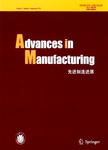Energy-efficient buffer and service rate allocation in manufacturing systems using hybrid machine learning and evolutionary algorithms
作者机构:Key Laboratory of Traffic Safety on Track of Ministry of EducationInstitute of Artificial Intelligence and Robotics(IAIR)School of Traffic and Transportation EngineeringCentral South UniversityChangsha410075People’s Republic of China Research into Artifacts Center for EngineeringSchool of EngineeringThe University of TokyoTokyoJapan
出 版 物:《Advances in Manufacturing》 (先进制造进展(英文版))
年 卷 期:2024年第12卷第2期
页 面:227-251页
核心收录:
学科分类:12[管理学] 1201[管理学-管理科学与工程(可授管理学、工学学位)] 0806[工学-冶金工程] 081104[工学-模式识别与智能系统] 08[工学] 0807[工学-动力工程及工程热物理] 0835[工学-软件工程] 0701[理学-数学] 0811[工学-控制科学与工程] 0812[工学-计算机科学与技术(可授工学、理学学位)]
基 金:supported by the National Natural Science Foundation of China(Grant Nos.61873283 and 52072412) the International Postdoctoral Exchange Fellowship Program(Grant No.YJ20210201)
主 题:Energy-efficient allocation Multi-objective optimization Energy efficiency Energy consumption Machine learning
摘 要:Currently,simultaneous buffer and service rate allocation is a topic of interest in the optimization of manufacturing *** allocation problems have been solved previously to satisfy economic requirements;however,owing to the progress of green manufacturing,energy conservation and environmental protection have become increasingly ***,an energy-efficient approach is developed to maximize the throughput and minimize the energy consumption of manufacturing systems,subject to the total buffer capacity,total service rate,and predefined energy *** energy-efficient approach integrates the simulated annealing-non-dominated sorting genetic algorithm-II with the honey badger algorithm-histogram-based gradient boosting regression *** former algorithm searches for Pareto-optimal solutions of sufficient *** latter algorithm builds prediction models to rapidly calculate the throughput,energy consumption,and energy *** examples show that the proposed hybrid approach can achieve a better solution quality compared with previously reported ***,the prediction models can rapidly evaluate manufacturing systems with sufficient *** study benefits the multi-objective optimization of green manufacturing systems.



